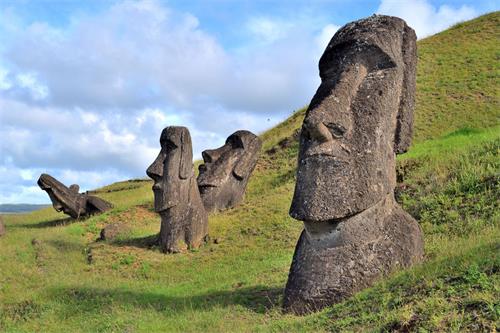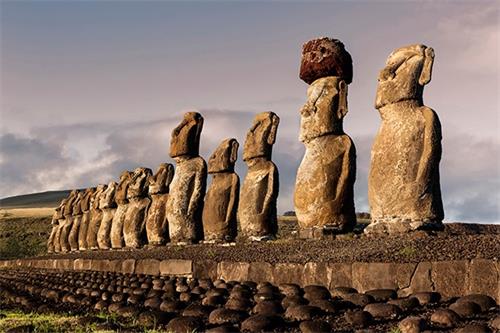
Easter Island, or Rapa Nui as it is known to the locals, is a remote and enigmatic island in the Pacific Ocean. Famous for its colossal stone statues known as Moai, this tiny Polynesian island has captivated the imaginations of travelers, archaeologists, and explorers for centuries. As you embark on a journey to this mysterious island, let's explore the secrets of the Moai and unravel the wonders that make Easter Island a unique destination.
The Mystery of the Moai:
At the heart of Easter Island's allure are the Moai, monolithic statues carved from compressed volcanic ash between 1250 and 1500 CE. The mystery lies not only in the sheer size and number of these statues but also in the questions surrounding their creation and purpose. How did a civilization with limited resources manage to carve and transport these massive statues, some weighing up to 82 tons, across the island?
Archaeologists believe that the Rapa Nui people used a combination of stone tools, wooden sledges, and human labor to transport the Moai from the quarries to their final positions. The process, however, remains a subject of debate and adds to the intrigue of the island. Visiting the quarries and marveling at the unfinished statues scattered across the landscape offers a glimpse into the challenges faced by the ancient Rapa Nui craftsmen.
Theories about the purpose of the Moai range from ancestral worship to representations of tribal leaders or symbols of status and power. As you wander among the statues, you can't help but feel the weight of history and the unresolved questions that surround these silent sentinels.

Travel Guide to Easter Island:
Easter Island may be remote, but its unique blend of natural beauty and archaeological wonders makes it a destination worth the journey. Here's a travel guide to help you make the most of your visit:
1. Getting There:
Easter Island is located about 2,300 miles off the coast of Chile, and the most common way to reach it is by flying from Santiago. Flights are limited, so plan your trip well in advance.
2. Accommodations:
The island offers a range of accommodations, from cozy guesthouses to more upscale hotels. It's advisable to book your stay ahead of time, especially during peak tourist seasons.
3. Exploring the Moai:
The main archaeological sites are located in Rano Raraku, where the Moai were carved, and Ahu Tongariki, the largest ceremonial platform on the island. A guided tour can provide valuable insights into the history and significance of these sites.
4. Cultural Experiences:
Engage with the local Rapa Nui culture by attending traditional dance performances, visiting the Rapa Nui National Park, and exploring the intriguing Petroglyphs around the island.
5. Outdoor Adventures:
Easter Island boasts stunning landscapes, including volcanic craters, pristine beaches, and rugged coastline. Hiking, horseback riding, and snorkeling are popular activities for those seeking outdoor adventures.
6. Local Cuisine:
Indulge in the island's unique culinary offerings, which often include fresh seafood, tropical fruits, and traditional Polynesian dishes. Don't miss the opportunity to try a traditional Rapa Nui feast called "Curanto."

Tortuguero National Park
Tortuguero National Park: Costa Rica's Sea Turtle Haven
Renowned as a haven for sea turtles, this national park is a mesmerizing destination that captivates the hearts of nature enthusiasts and adventure seekers alike.

Easter Island
Easter Island (Rapa Nui): Mysteries of the Moai
Easter Island, or Rapa Nui as it is known to the locals, is a remote and enigmatic island in the Pacific Ocean.

Copán Ruins
Copán Ruins: Ancient Mysteries in Honduras
As visitors wander through the remnants of a once-flourishing civilization, they are transported to an era when Copán was a vibrant center of art, culture, and intellectual achievement.


